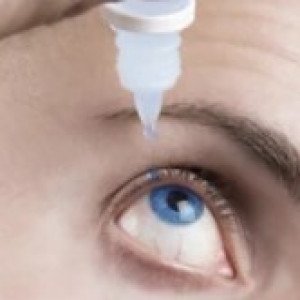 Welcome
Welcome
“May all be happy, may all be healed, may all be at peace and may no one ever suffer."
Reman Drug Laboratories Ltd.

Recular 0.50%

Generic for Diseases
Ketorolac is a nonsteroidal anti-inflammatory drug (NSAID) chemically related to indomethacin and tolmetin. Ketorolac tromethamine is a racemic mixture of [-]S- and [+]R-enantiomeric forms, with the S-form having analgesic activity. Its antiinflammatory effects are believed to be due to inhibition of both cylooxygenase-1 (COX-1) and cylooxygenase-2 (COX-2) which leads to the inhibition of prostaglandin synthesis leading to decreased formation of precursors of prostaglandins and thromboxanes from arachidonic acid. The resultant reduction in prostaglandin synthesis and activity may be at least partially responsible for many of the adverse, as well as the therapeutic, effects of these medications. Analgesia is probably produced via a peripheral action in which blockade of pain impulse generation results from decreased prostaglandin activity. However, inhibition of the synthesis or actions of other substances that sensitize pain receptors to mechanical or chemical stimulation may also contribute to the analgesic effect. In terms of the ophthalmic applications of ketorolac - ocular administration of ketorolac reduces prostaglandin E2 levels in aqueous humor, secondary to inhibition of prostaglandin biosynthesis.
Ketorolac Tromethamine is indicated for seasonal allergic conjunctivitis and for pain and inflammation in ocular surgery. It is also indicated for the treatment of postoperative inflammation in patients who have undergone cataract extraction.
For the treatment of relief of ocular itching due to seasonal allergic conjunctivitis, one drop (0.25 mg) four times a day. For the treatment of postoperative inflammation in patients who have undergone cataract extraction, one drop should be applied to the affected eye(s) four times daily beginning 24 hours after cataract surgery and continuing through the first 2 weeks of the postoperative period. It has been safely administered in conjunction with other ophthalmic medications such as antibiotics, beta blockers, carbonic anhydrase inhibitors, cycloplegics, and mydriatics.
Contraindicated in patients with previously demonstrated hypersensitivity to any of the ingredients in the formulation.
Transient stinging and burning on instillation, allergic reactions, corneal edema, iritis, ocular inflammation, ocular irritation, superficial keratitis and superficial ocular infections. Corneal infiltrates, corneal ulcer, eye dryness, headaches, and visual disturbance (blurry vision)
All topical nonsteroidal anti-inflammatory drugs (NSAIDs) may slow or delay healing. Topical corticosteroids are also known to slow or delay healing. Concomitant use of topical NSAIDS and topical steroids may increase the potential for healing problems. Use of topical NSAIDs may result in keratitis. In some susceptible patients, continued use of topical NSAIDs may result in epithelial breakdown, corneal thinning, corneal erosion, corneal ulceration or corneal perforation. These events may be sight threatening. Patients with evidence of corneal epithelial breakdown should immediately discontinue use of topical NSAIDs and should be closely monitored for corneal health.
There is the potential for cross-sensitivity to acetylsalicylic acid, phenylacetic acid derivatives, and other nonsteroidal anti inflammatory agents. Therefore, caution should be used when treating individuals who have previously exhibited sensitivities to these drugs. With some nonsteroidal antiinflammatory drugs, there exists the potential for increased bleeding time due to interference with thrombocyte aggregation. There have been reports that ocularly applied nonsteroidal anti-inflammatory drugs may cause increased bleeding of ocular tissues in conjunction with ocular surgery.
Use in Special Populations
Pediatric Use: Safety and efficacy in pediatric patients below the age of 3 have not been established.
Geriatric Use: No overall differences in safety or effectiveness have been observed between elderly and younger patients.
Pregnancy & Lactation
Pregnancy Category C: There is no adequate and well-controlled studies in pregnant women. The drug should be used during pregnancy only if the potential benefit justifies the potential risk to the fetus. The use of drug during late pregnancy should be avoided.
Nursing Mothers: Caution should be exercised when ophthalmic solution is administered to a nursing woman.
Recular 0.50% and more Available Brands
Optaphenicol 1%
Pilo Drop 2%
Mydrimide 0.50%
Pilo Drop 1%
Pilo Drop 2%
R-Zol 400mg
Pilo Drop 4%
Betason N 0.1% + 0.5...
...
To be happy, beautiful, healthy, wealthy, hale and long-lived stay with DM3S.